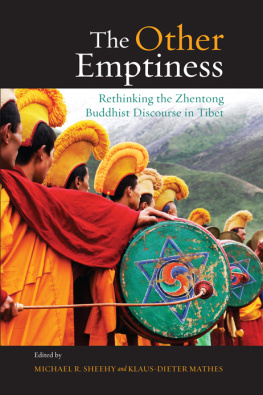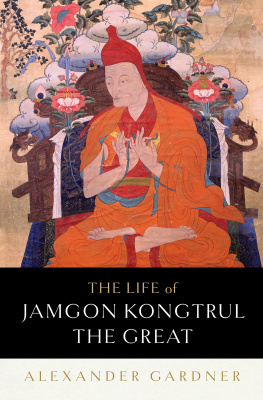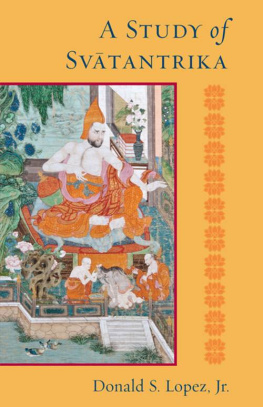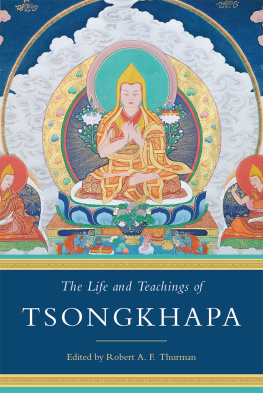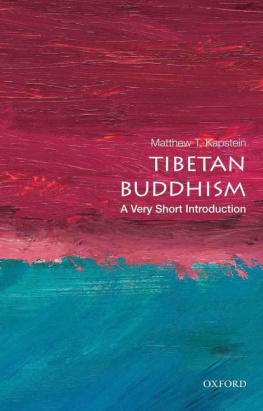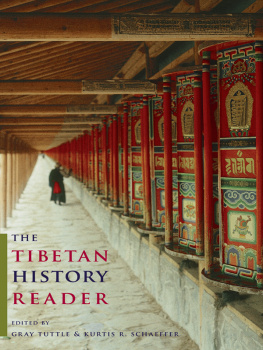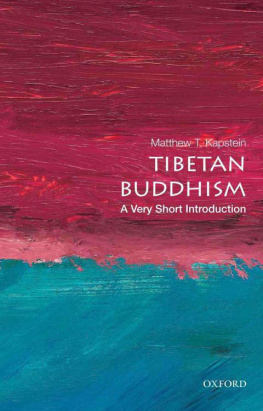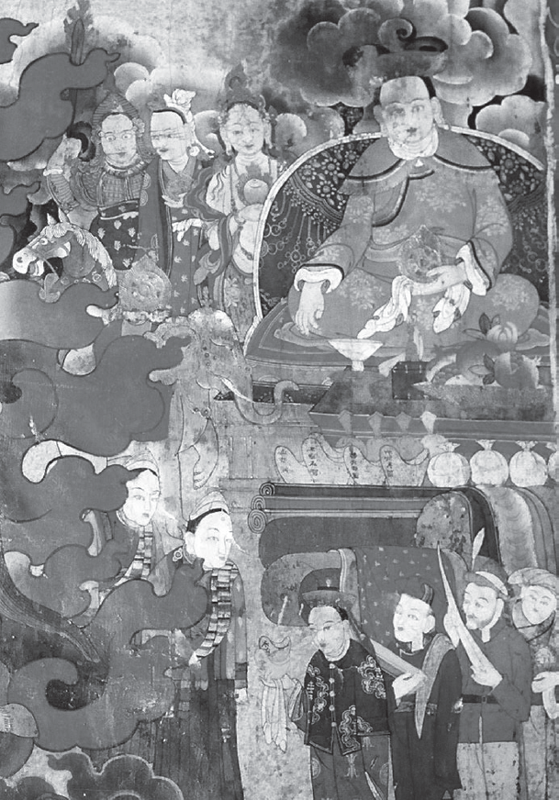Sources of Tibetan Tradition
INTRODUCTION TO ASIAN CIVILIZATIONS
Introduction to Asian Civilizations
WM. THEODORE DE BARY, GENERAL EDITOR
Sources of Japanese Tradition,
1958; paperback ed., 2 vols., 1964
Second ed., vol. 1, 2001, compiled by Wm. Theodore de Bary, Donald Keene, George Tanabe, and Paul Varley; vol. 2, 2005, compiled by Wm. Theodore de Bary, Carol Gluck, and Arthur E. Tiedemann; vol. 2, abridged, 2 pts., 2006, compiled by Wm. Theodore de Bary, Carol Gluck, and Arthur E. Tiedemann
Sources of Indian Tradition,
1958; paperback ed., 2 vols., 1964
Second ed., vol. 1, 1988, edited and revised by Ainslee T. Embree; vol. 2, 1988, edited by Stephen Hay
Sources of Chinese Tradition,
1960, paperback ed., 2 vols., 1964
Second ed., vol. 1, 1999, compiled by Wm. Theodore de Bary and Irene Bloom; vol. 2, 2000, compiled by Wm. Theodore de Bary and Richard Lufrano
Sources of Korean Tradition,
1997; 2 vols., vol. 1, 1997, compiled by Peter H. Lee and Wm. Theodore de Bary; vol. 2, 2001, compiled by Yngho Choe, Peter H. Lee, and Wm. Theodore de Bary
Sources of East Asian Tradition,
2008, 2 vols., edited by Wm. Theodore de Bary
Sources of Vietnamese Tradition,
2012, edited by George Dutton, Jayne Werner, and John K. Whitmore
Sources of Tibetan Tradition
Edited by
Kurtis R. Schaeffer, Matthew T. Kapstein, and Gray Tuttle
COLUMBIA UNIVERSITY PRESS
NEW YORK
A special thank you to the Shelley & Donald Rubin Foundation and the University Committee on Asia and the Middle East at Columbia for crucial financial support for the publication of this book.
Columbia University Press
Publishers Since 1893
New York Chichester, West Sussex
cup.columbia.edu
Copyright 2013 Columbia University Press
Tibetan embroidery, collection of Carolyn and Wesley Halpert
All rights reserved
E-ISBN 978-0-231-50978-7
Library of Congress Cataloging-in-Publication Data
Sources of Tibetan tradition / edited by Kurtis R. Schaeffer, Matthew T. Kapstein, and Gray Tuttle.
p. cm.(Introduction to Asian civilizations)
Includes bibliographical references and index.
ISBN 978-0-231-13598-6 (cloth : alk. paper)ISBN 978-0-231-13599-3 (paper : alk. paper)ISBN 978-0-231-50978-7 (electronic)
1. Tibet RegionCivilizationSources. 2. Tibet RegionHistorySources. 3. Tibet RegionIntellectual lifeSources. 4. Tibet RegionSocial conditionsSources.
I. Schaeffer, Kurtis R. II. Kapstein, Matthew. III. Tuttle, Gray.
DS785.A37 2012
A Columbia University Press E-book.
CUP would be pleased to hear about your reading experience with this e-book at .
References to Internet Web sites (URLs) were accurate at the time of writing. Neither the author nor Columbia University Press is responsible for URLs that may have expired or changed since the manuscript was prepared.
Sources of Tibetan Tradition is dedicated to the memory of our friend and mentor, Ellis Gene Smith (19362010), or Mahpaita Jamyang Namgyel, as his Tibetan friends knew him.
Genes life mission was the preservation and dissemination of Tibetan literature. Without his extraordinary accomplishments in this domain, the present work could not have been conceived.
) in the temple of Lamochok, Central Tibet.
Photo Matthew T. Kapstein
CONTENTS
The first Tibetan writings were set down during the seventh century, when English was only beginning to take shape among Anglo-Saxon tongues and Beowulf had not yet been written. Tibetan, in the thirteen hundred years of its existence as a literary language, has been employed for administrative and diplomatic documents; for recording history, biography, and autobiography; for texts on medicine, the arts, and crafts; for epic poetry and popular narrative; and for much else besides the copious Buddhist religious and philosophical literature that are its best known expressions. Many thousands of Tibetan-language works are now available to scholarship, and Tibetan must be counted among the major vehicles of Asian civilizations. Its rich heritage, however, remains poorly represented outside of specialized research, and hence largely inaccessible to students and general readers, and even to scholars in Asian Studies who focus on areas besides Tibet. Sources of Tibetan Tradition offers, for the first time, more than 180 selections drawn from the broad range of Tibetan writings, illustrating all periods of Tibetan history from the medieval Tibetan empire to the beginnings of Tibetan modernity and stemming from most regions where Tibetan has traditionally been employed, from the borders of Kashmir to Beijing and from Mongolia to Bhutan.
Tibetan civilization, as a transforming force that has been adopted by a range of other peoples and cultures, has spread even more broadly than its core region on the Tibetan plateau and the grasslands of Mongolia. In the early seventeenth century, for example, Tibetan Buddhist culture and literature reached as far east as Manchuria and west into Europe, where the Kalmyk Mongols settled on the banks of the Volga River in Russia. The Tibetan literary language became a powerful medium for intellectual life far beyond Tibetan ethnolinguistic boundaries. By the mid-twentieth century, nearly every large city in China had Tibetan Buddhist centers, and devoted Chinese followers attended events in the thousands. With the post1959 diaspora, Tibetans have moved all over the globe, bringing their culture with them; in the 35 years from 1959 to 1994, over 450 Tibetan Buddhist institutions were founded outside Tibet. While over 150 served Tibetan communities in exile in India, the majority were founded in the West (over 250 in Europe and North America, and just over a dozen in South America). Among overseas Chinese in Southeast Asia, Taiwan, and Hong Kong, some two dozen groups were established as well. Since 1994, growth has accelerated to such a degree that no effort has been made to record all the Tibetan Buddhist centers that have now opened. By 2012, there were 300 in Taiwan alone. The flourishing of Tibetan civilizationwhich has expanded globally even while troubled in its homelandfrom the seventeenth century to today is just one reason a book such as this is needed. Anyone who wishes to enrich her or his appreciation of the wealth of world cultures must be able to access a broad range of Tibetan culture.
The plan of Sources of Tibetan Tradition is historical, following the periodization often adopted by Tibetan historians (and, with small modifications, by contemporary historians as well). , Political Expansion and the Beginnings of Tibetan Buddhist Culture, introduces sources for our knowledge of early medieval Tibet, up to the fall of the old Tibetan empire during the mid-ninth century and its immediate aftermath. Tibetan documents dating to this period include inscriptions from Central Tibet and manuscripts discovered in the famous Silk Road Library Cave at Dunhuang. The first chapter, the only one in the volume not based on Tibetan texts, introduces Tibet in the broader context of the medieval world, presenting a selection of pertinent Chinese, Islamic, and European works concerning Tibet as it was known within these three civilizational spheres. Subsequent chapters present imperial annals, political edicts, and the early iterations of Tibetan law, medicine, and divinatory arts. Religious developments are taken up in this parts final chapter.



